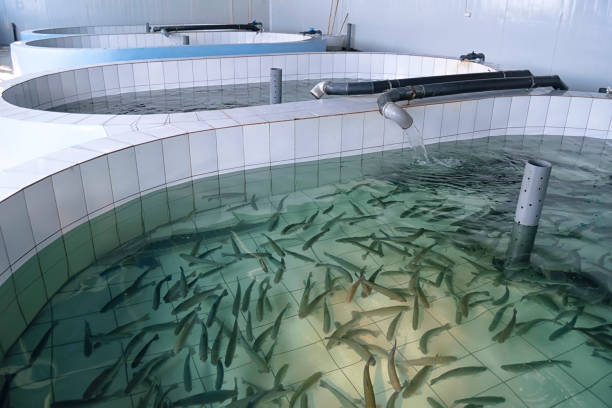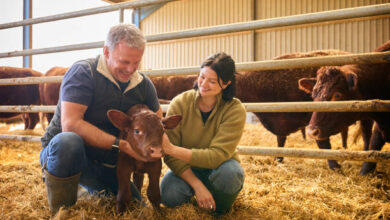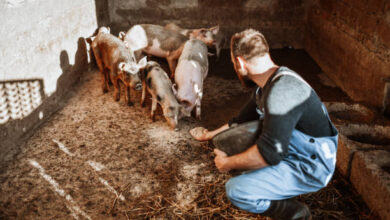
Fish Farming: A Comprehensive Guide to Successful Aquaculture
Fish farming, or aquaculture, has become an essential component of modern food production and environmental sustainability. This comprehensive guide will explore what fish farming is, its benefits, best practices, and future trends, providing you with valuable insights into this crucial industry. Whether you’re considering starting your own fish farm or just curious about how it works, this guide will give you the knowledge you need.
Understanding Fish Farming
- Definition of Fish Farming:
Fish farming, also known as aquaculture, involves the controlled breeding and harvesting of fish in various aquatic environments. Unlike wild fishing, which relies on natural habitats, fish farming is conducted in artificial or semi-natural settings to produce seafood efficiently. This practice helps meet the increasing global demand for fish and seafood products while reducing pressure on wild fish populations.
- Types of Fish Farming Systems:
– Pond Systems: These are traditional, open-air systems where fish are grown in large, natural or man-made ponds. Pond systems are generally cost-effective but require careful management of water quality and fish health.
– Recirculating Aquaculture Systems (RAS): RAS use advanced filtration and water treatment technologies to recycle water, making them highly efficient and suitable for urban or land-limited areas. They offer better control over water quality but come with higher initial costs.
– Cage Systems: In cage systems, fish are raised in netted enclosures suspended in natural water bodies like lakes or oceans. This method allows for large-scale production but may pose challenges related to environmental impact and disease management.
Benefits of Fish Farming
- Economic Benefits:
Fish farming significantly contributes to local and global economies by providing a steady supply of seafood. It creates job opportunities in various sectors, including fish hatcheries, feed production, and farm management. Additionally, fish farming supports local economies by reducing the reliance on imported seafood and promoting regional food security.
- Environmental Benefits:
Fish farming offers several environmental advantages over traditional wild fishing:
– Sustainability: By reducing pressure on wild fish stocks, aquaculture helps preserve marine ecosystems and biodiversity.
– Controlled Impact: Well-managed fish farms can minimize environmental impacts through proper waste management and sustainable practices, compared to the overfishing and habitat destruction associated with some wild fishing practices.
- Health Benefits:
Farmed fish are a valuable source of high-quality protein, omega-3 fatty acids, and other essential nutrients. Fish farming can help meet the growing demand for seafood, offering a nutritious alternative to land-based protein sources. Additionally, with advancements in aquaculture practices, farmed fish can be produced with lower levels of contaminants and diseases.
You May Love To Read
Farming Sim: A Complete Guide to the Best Farming Sim.
What is O Farming? Organic Farming
Farming Simulator 22: Ultimate Guide and Tips for Success
Fish Farming Techniques and Best Practices
- Site Selection and Preparation:
Choosing the right site for fish farm is crucial for success. Factors to consider include water availability, quality, and environmental conditions. Proper site preparation involves assessing soil and water quality, constructing necessary infrastructure, and ensuring compliance with local regulations.
- Choosing the Right Fish Species:
Selecting the appropriate fish species is essential for successful aquaculture. Popular species include tilapia, salmon, trout, and catfish, each with specific habitat and care requirements. Consider factors such as growth rate, market demand, and disease resistance when choosing species for your farm.
- Feeding and Nutrition:
Proper feeding and nutrition are vital for fish health and growth. Use high-quality feeds formulated to meet the nutritional needs of your chosen species. Implement feeding schedules that ensure fish receive adequate nutrients while avoiding overfeeding, which can lead to water quality issues.
- Water Quality Management:
Maintaining optimal water quality is critical for fish health. Regularly monitor parameters such as temperature, pH, oxygen levels, and ammonia concentrations. Implement filtration and aeration systems to keep water conditions within the ideal range for your fish species.
- Disease Management:
Fish farms are susceptible to various diseases, which can impact fish health and productivity. Preventative measures include maintaining good water quality, using disease-resistant strains, and implementing biosecurity protocols. In the event of an outbreak, timely diagnosis and treatment are essential to minimize losses.
Challenges in Fish Farming
- Environmental Challenges:
It can pose environmental challenges such as waste management and water pollution. Address these issues by implementing effective waste treatment systems, using environmentally friendly practices, and adhering to regulations to minimize your farm’s ecological footprint.
- Economic Challenges:
Setting up and maintaining a fish farm can be costly, with expenses related to infrastructure, equipment, and feed. Market fluctuations and price volatility can also impact profitability. Careful planning, budgeting, and market research are crucial for managing economic risks and ensuring financial stability.
- Technical Challenges:
Technical difficulties, such as equipment failure or system malfunctions, can disrupt farm operations. Regular maintenance, staff training, and contingency planning are essential for addressing technical challenges and ensuring smooth farm management.
Future Trends in Fish Farming
- Technological Advancements:
Innovations in fish farming technology are driving the industry forward. Advances in automation, monitoring systems, and data analytics are improving efficiency and sustainability. Technologies such as sensor networks and artificial intelligence are helping farmers optimize operations and enhance fish health management.
- Sustainability and Eco-Friendly Practices:
The future of fish farming is increasingly focused on sustainability. Emerging trends include the development of closed-loop systems that minimize environmental impact, the use of alternative feeds, and the integration of renewable energy sources. These practices aim to make it more eco-friendly and align with global sustainability goals.
Common Questions
- What is fish farming and how does it work?
Fish farming, or aquaculture, is the controlled breeding and harvesting of fish in artificial or semi-natural environments. It involves managing water quality, feeding, and fish health to produce seafood efficiently.
- What are the benefits of fish farming for the economy and environment?
It provides economic benefits by creating jobs and supporting local economies. It also offers environmental advantages by reducing pressure on wild fish stocks and allowing for controlled production practices.
- What are the best practices for successful fish farming?
It involves proper site selection, choosing the right fish species, maintaining optimal water quality, and implementing effective feeding and disease management practices.
- What challenges do fish farmers face and how can they be overcome?
Challenges in fish farming include environmental impact, economic costs, and technical difficulties. These can be addressed through careful planning, effective waste management, and ongoing maintenance and training.
Conclusion
Fish farming is a vital component of modern aquaculture, offering numerous benefits for the economy, environment, and public health. By understanding the fundamentals, implementing best practices, and staying informed about emerging trends, you can contribute to the success and sustainability of this important industry. Embrace the opportunities it provides, and enjoy the rewards of contributing to a more sustainable food system.




